Day #11 - Melk And Krems Austria (Page Sixteen)

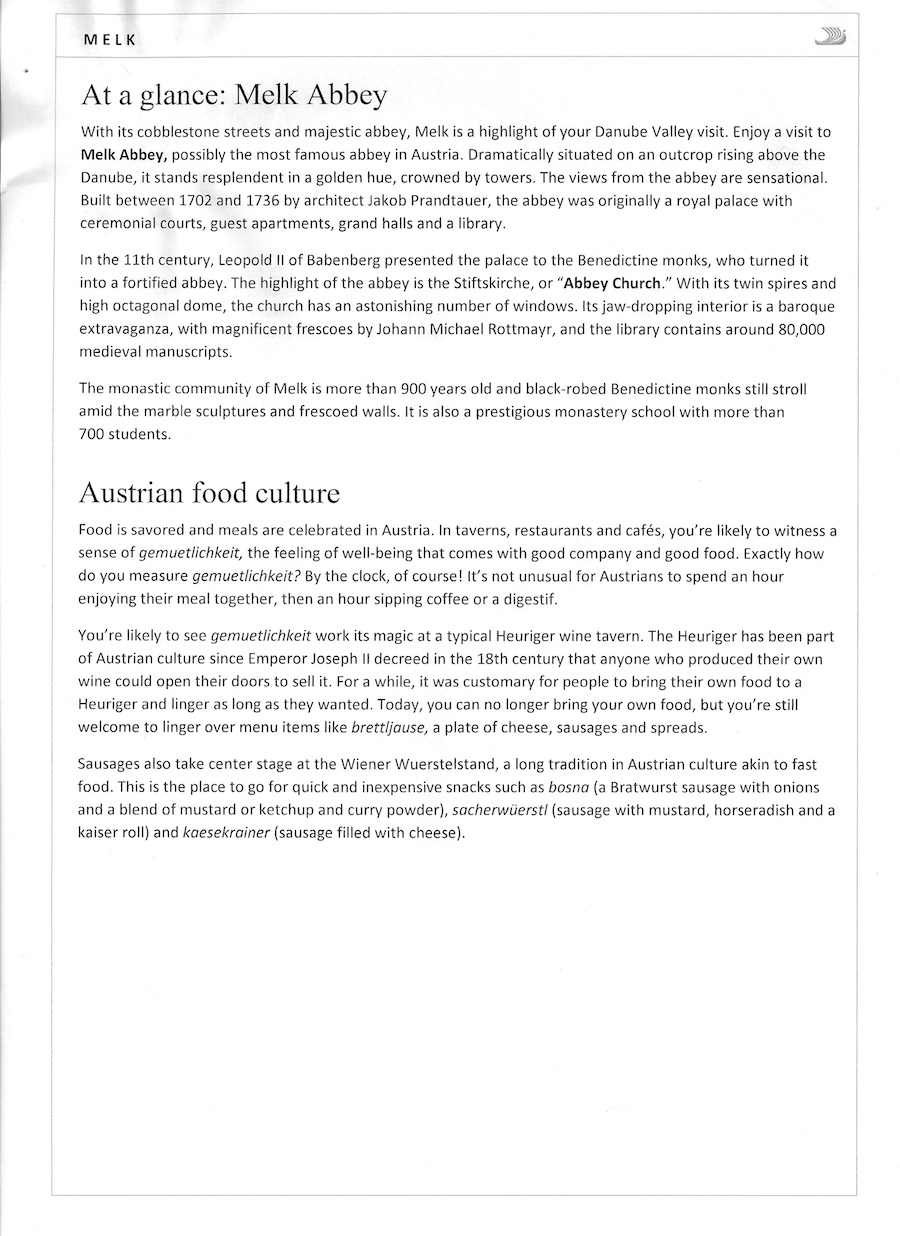
We have two stops today after a 115 miles over night cruise. At 8:00 AM we are ddropped off at Melk and we rejoin the ship at 2:00 PM for a secic two hour sail to Krems where we debark for another two hours in Krems and we are back on board at 7:00 PM for our sail to Vienna.


Did You Know? - Melk (older spelling: Mölk) is a city of Austria, in the federal state of Lower Austria, next to the Wachau valley along the Danube. Melk has a population of 5,257 (as of 2012). It is best known as the site of a massive baroque Benedictine monastery named Melk Abbey.
The town is first mentioned as Medilica in 831 in a donation of Louis the German; the name is from a Slavic word for 'border.' The area around Melk was given to Margrave Leopold I in the year 976 to serve as a buffer between the Magyars (called "Turks" in that time's sources) to east and Bavaria to the west. In 996 mention was first made of an area known as Ostarrîchi, which is the origin of the word Österreich (German for Austria).
The bluff which holds the current monastery held a Babenberger castle until the site was given to Benedictine monks from nearby Lambach by Margrave Leopold II in 1089. Melk received market rights in 1227 and became a municipality in 1898. In a very small area, Melk presents a great deal of architectural variety from many centuries.
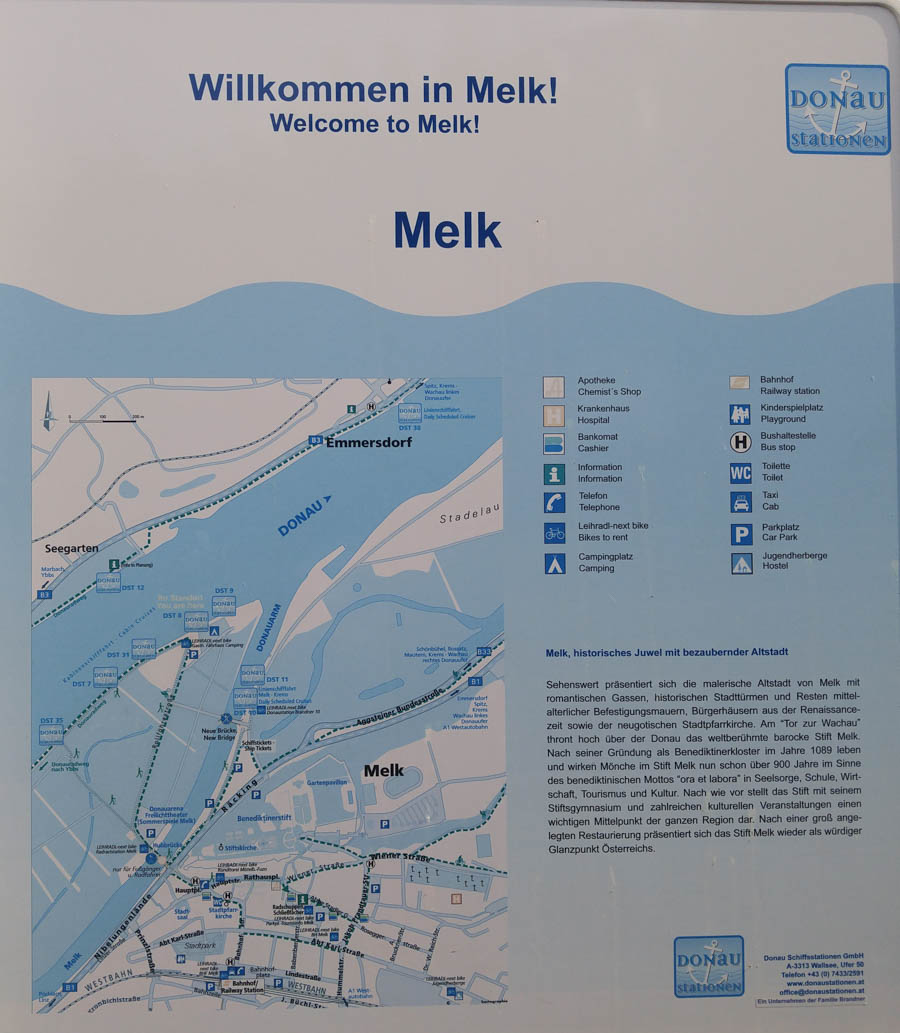

We asked the Captain if he could get any closer to the city!

We popped on the bus for a quick tour... Better than walking up the hill

Babenberger Castle (known as the Melk Abbey)
has
a magnificent view of the surroundings
Did You Know? - The House of Babenberg was a noble dynasty of Austrian margraves and dukes. Originally from Bamberg in the Duchy of Franconia (present-day Bavaria), the Babenbergs ruled the Imperial Margraviate of Austria from its creation in 976 AD until its elevation to a duchy, and from then until the extinction of the line in 1246, whereafter they were succeeded by the House of Habsburg.

We tried to stop her but...
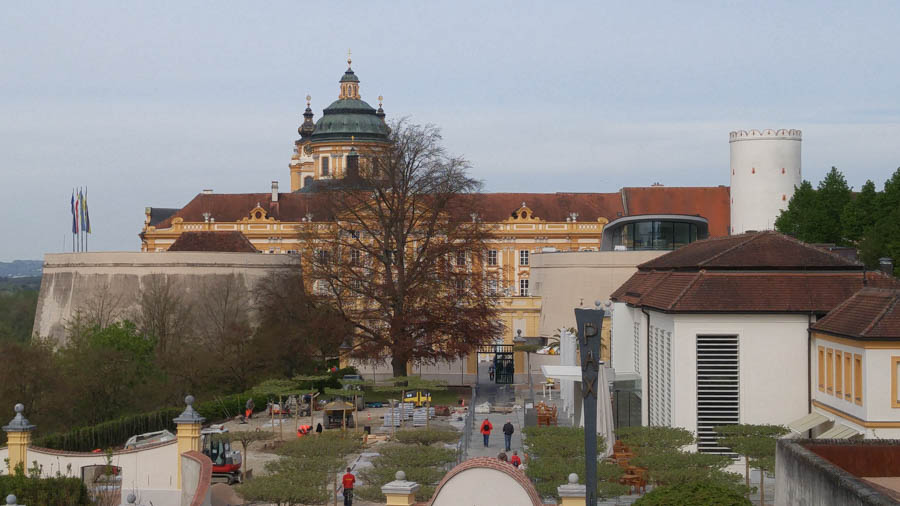
It was larger than life when we finally reached Melk Abbey
Did You Know? - The Melk Abbey is a Benedictine abbey above the town of Melk, Lower Austria, Austria, on a rocky outcrop overlooking the Danube river, adjoining the Wachau valley.
The abbey contains the tomb of Saint Coloman of Stockerau and the remains of several members of the House of Babenberg, Austria's first ruling dynasty.

We are about to enter the medieval times
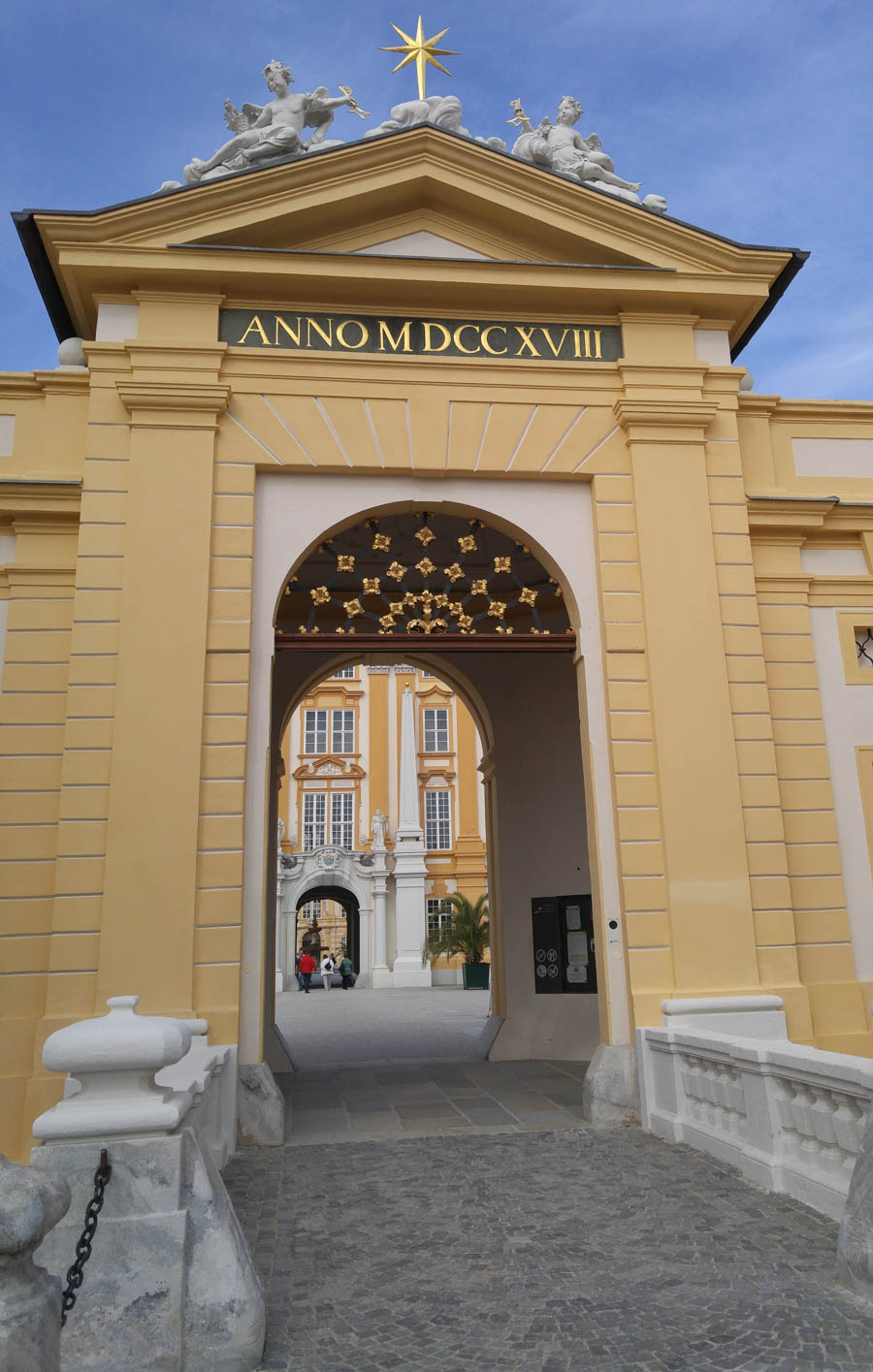
The year is now 1718
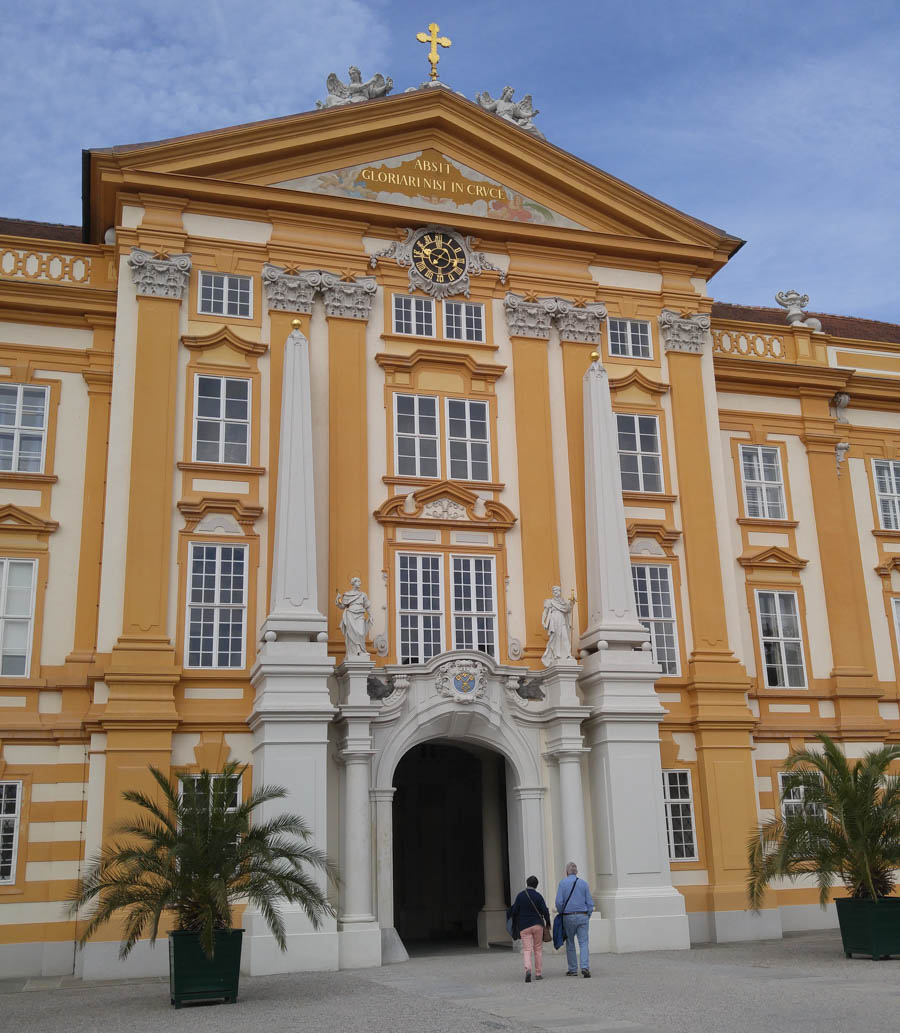
Once inside the walls, the place is huge

Click to see the enlarged view
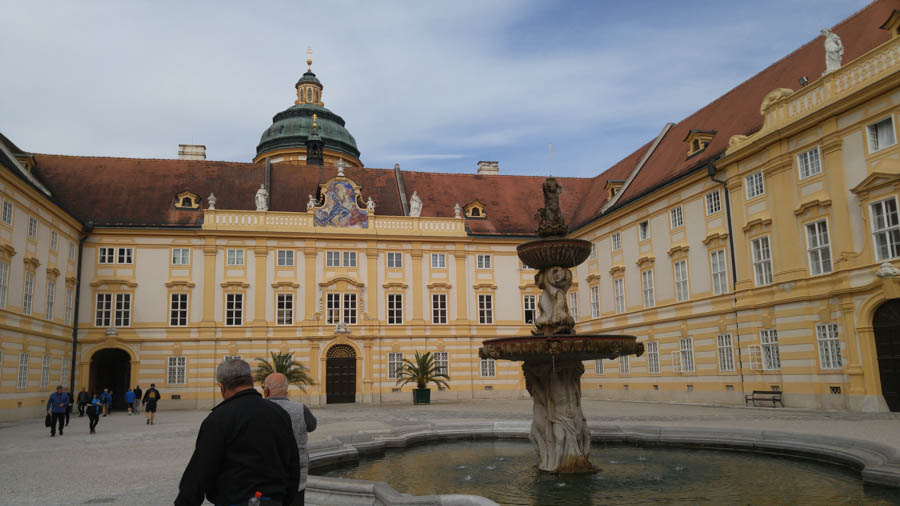
Must have a fountain!
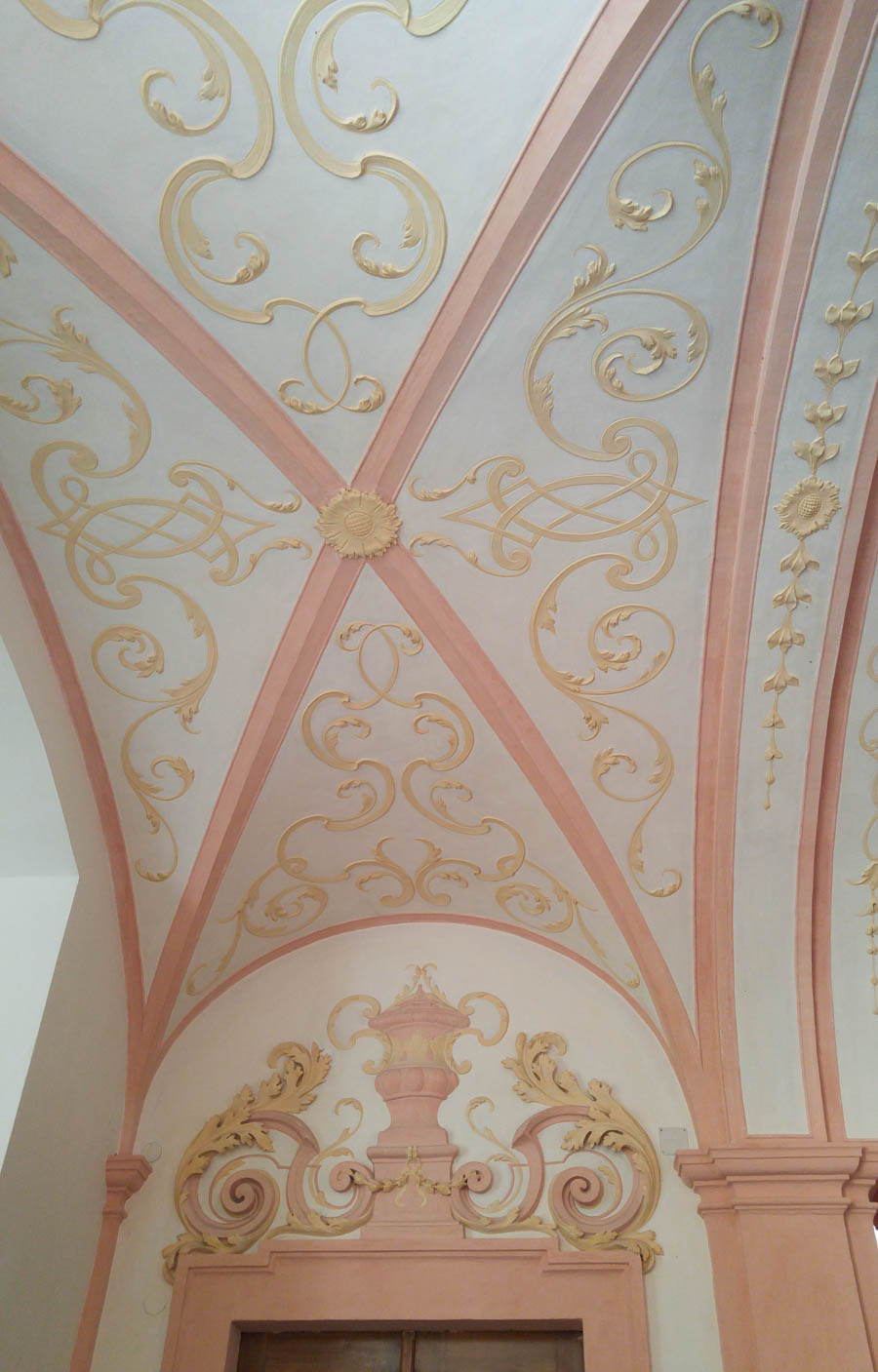
The craftsmanship was just fantastic

Click for the full sized image
Did You Know? - The ceiling painting shows Pallas Athena on a chariot drawn by lions as a symbol of wisdom and moderation. Hercules is to her left, symbolizing the force necessary to conquer the three-headed hound of hell, night, and sin. Both Pallas Athena and Hercules are disguised references to Holy Roman Emperor Charles VI

Click to see the panoramic view from the top

A real birds eye view!

One can see for miles

Always repairs underway

The stonemasons had great skills

The tourists just loved the view

Must be a lot of visitors from the orient?


We walked the surrounding gardens
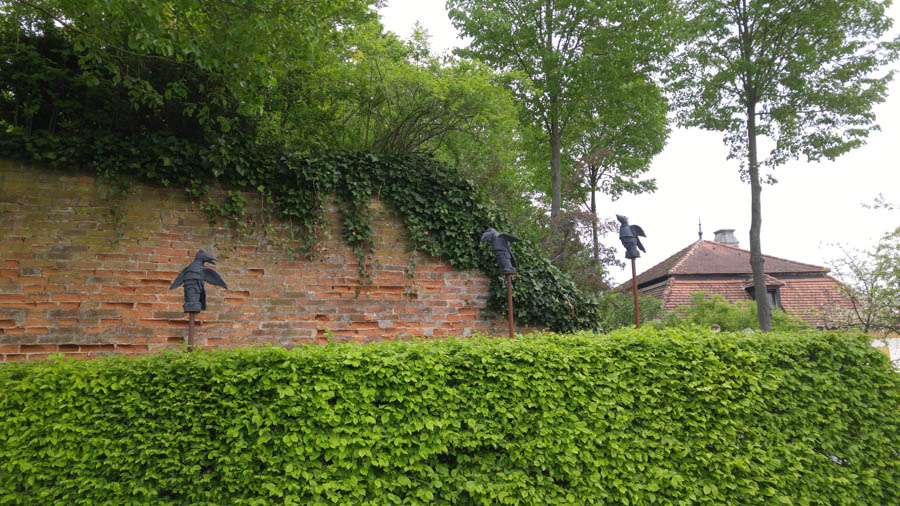
Watch out for the birds

They are watching you!
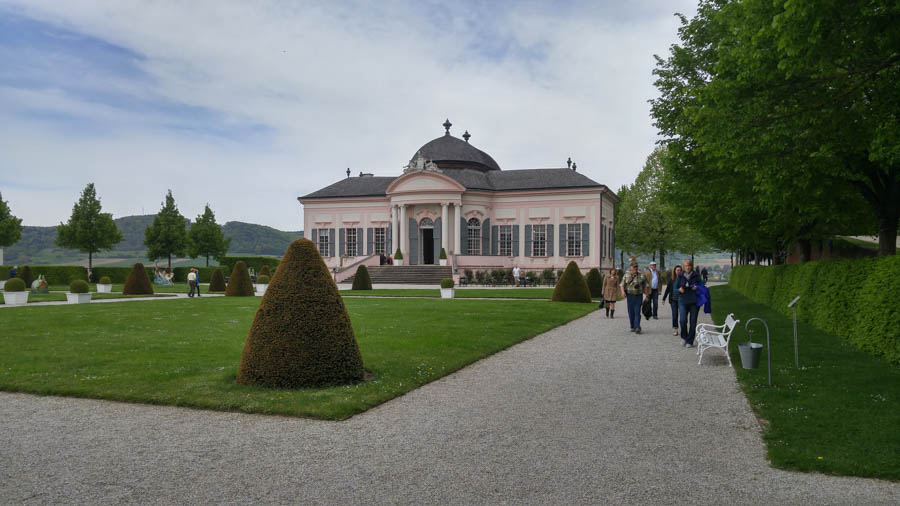
The pavillion is at the end of the garden

How many bricks did it take?

The knitters are closeby

Tulips pop up everywhere

Taking a rest

Back to the bottom of the hill

An imposing structure to say the least

More measurements of where the river crested in previous years
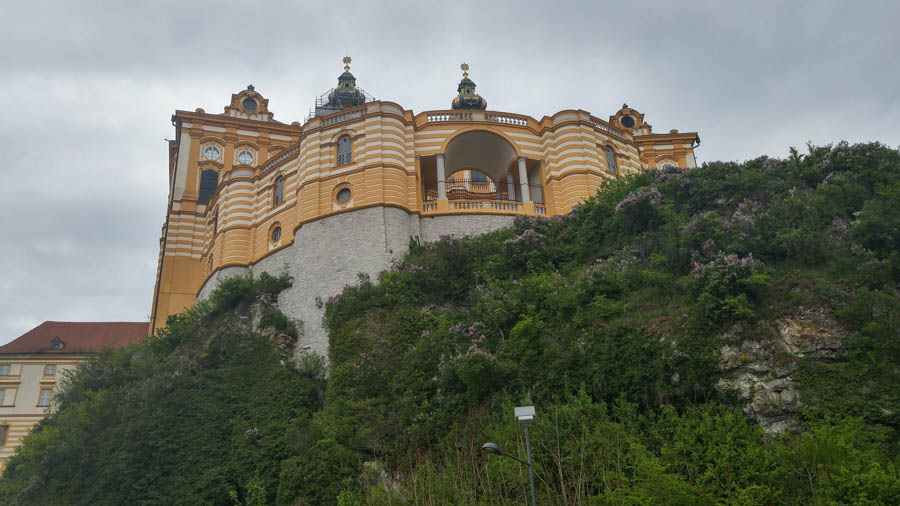
No wonder we had such an amazing view from up there

BAck to the ship for a short sail to Krem Austria

The signs were quite helpful
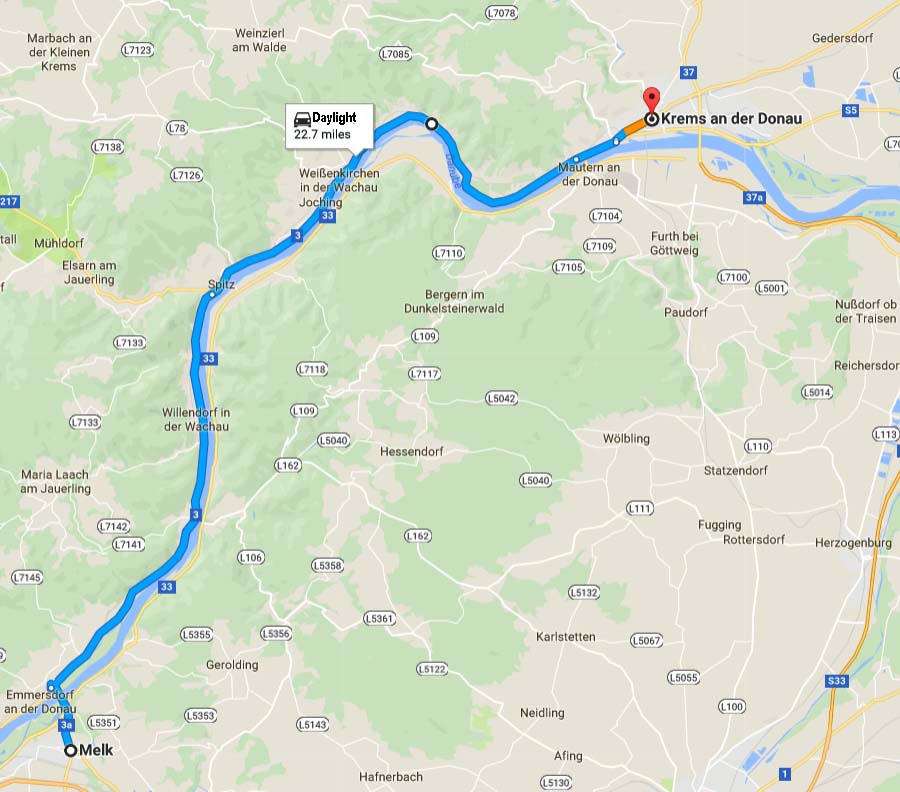
Sights to see along the river


...and away we go!

The river markers are essential because of the sand

Many Long Boats come this way

Built right into the rock for protection
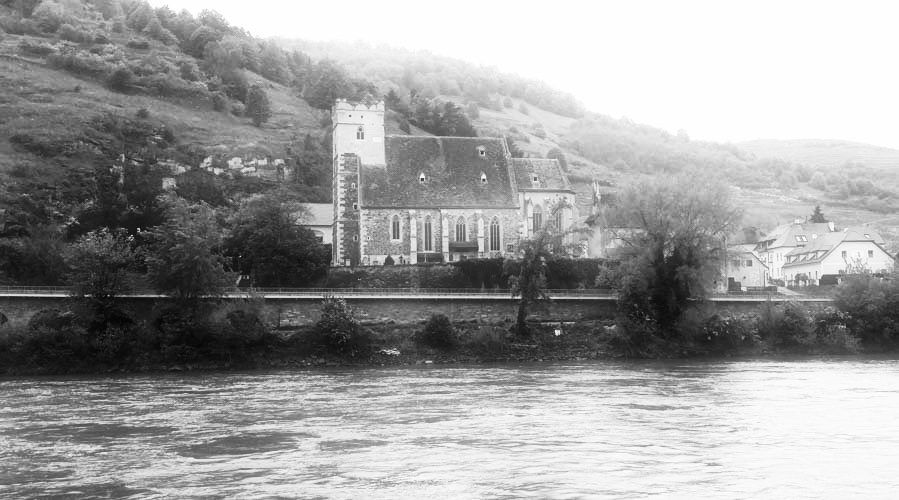
The churches has a great view even in black & white!

Beautiful tile roofs

We are passing by Dürnstein
Did You Know? - Dürnstein is a small town on the Danube river in the Krems-Land district, in the Austrian state of Lower Austria. It is one of the most-visited tourist destinations in the Wachau region and also a well-known wine growing area.
The town gained its name from the medieval castle Burgruine Dürnstein, which overlooked it. The castle was called "Duerrstein" or "Dürrstein", from the German duerr/dürr, meaning "dry", and Stein, "stone". The castle was dry because it was on a rocky hill, high above the damp conditions of the Danube at the base of the hill, and it was built of stone.

The famous Durstein Chapel
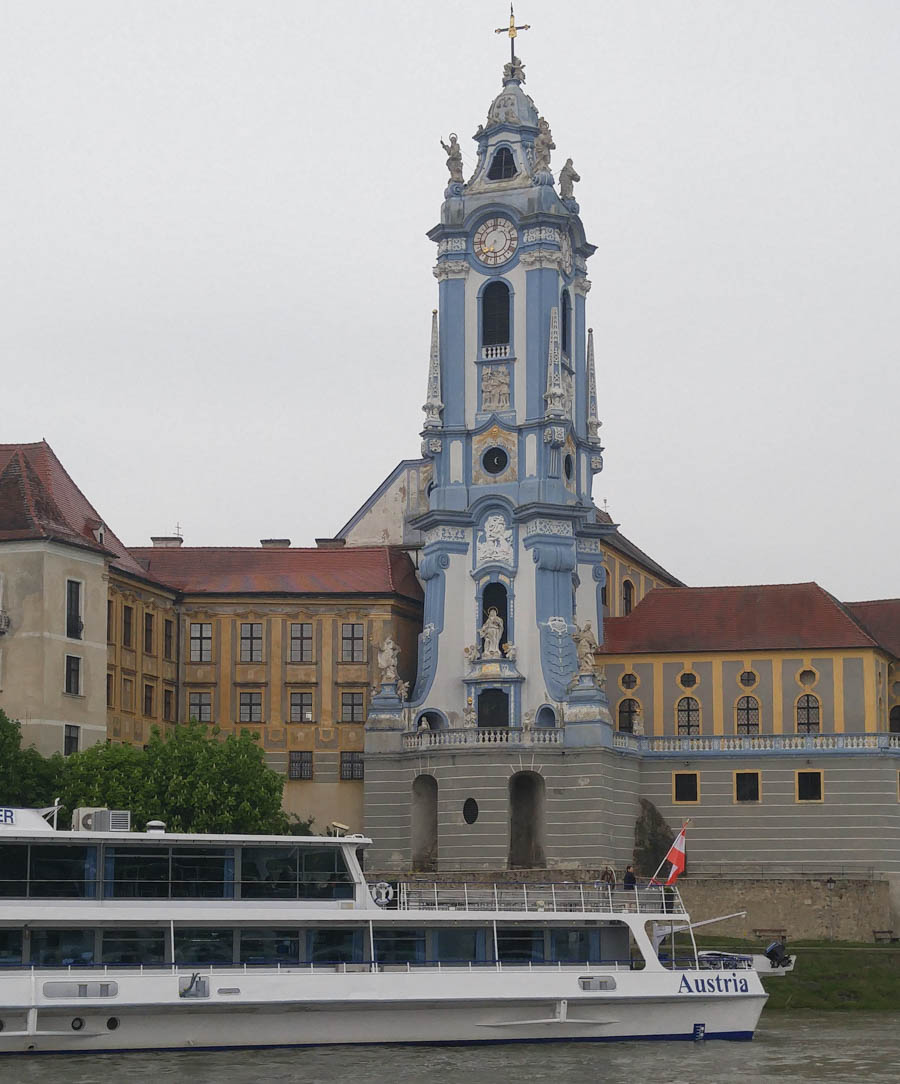
Located right on the water

Durnstein-Whaco panorama (Click for full sized image)


He was too bust so we could not sit in his seat...
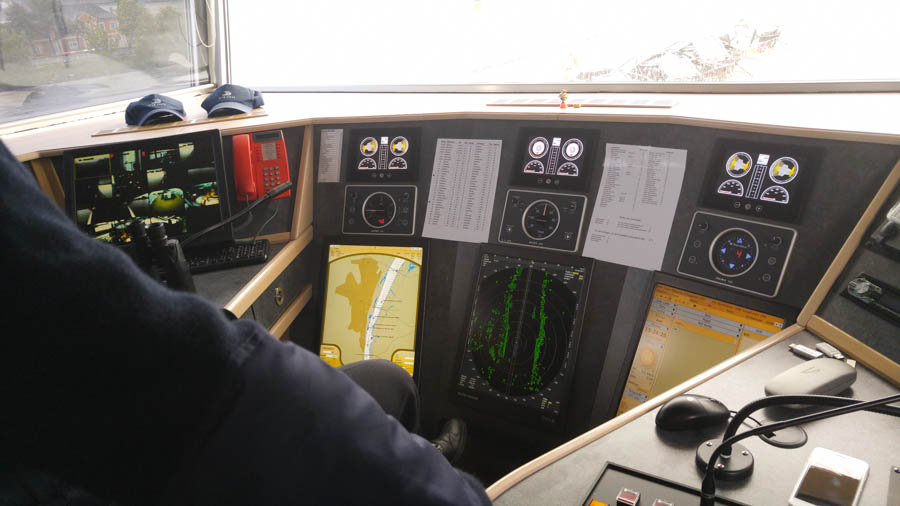
Love the electronics

Birds eye view

The canals are always busy and so is he!

The radar provides a 360 degree view

Keep up the good work!

A little culinary class to pass the time?

Tieing up at Krems

We are ready to debark

Welcome
Did You Know? - Krems an der Donau [kʀɛms an dɐ ˈdoːnaʊ̯] is a town of 23,992 inhabitants[when?] in Austria, in the federal state of Lower Austria. It is the fifth-largest city of Lower Austria and is approximately 70 kilometres (43 miles) west of Vienna. Krems is a city with its own statute (or Statutarstadt), and therefore it is both a municipality and a district.
Krems is located at the confluence of the Krems and Danube Rivers at the eastern end of Wachau valley, in the southern Waldviertel.
Krems borders the following municipalities: Stratzing, Langenlois, Rohrendorf bei Krems, Gedersdorf, Traismauer, Nußdorf ob der Traisen, Paudorf, Furth bei Göttweig, Mautern an der Donau, Dürnstein, and Senftenberg.
Krems was first mentioned in 995 in a certificate of Otto III,[2] but settlement was apparent even before then. For example, a child's grave, over 27,000 years old, was found here. This is the oldest grave found in Austria.
During the 11th and 12th centuries, Chremis, as it was then called, was almost as large as Vienna.
Krems is the primary producer of Marillenschnaps, an apricot brandy.

Nice size city today but...

...it was small in the 1600's
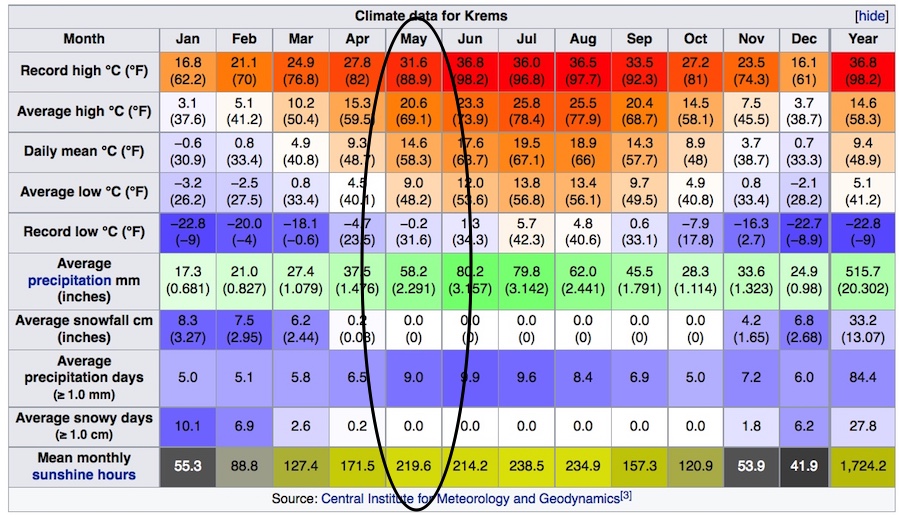

Mark the time... We have two hours... Walking through
the Steiner Tor gate
Did You Know? - Steiner Tor is a-preserved gate, originally built in the late 15th century but refashioned in the Baroque style in the city of Krems an der Donau, in the Wachau valley of Austria. It is considered the symbol of the city. Until the last third of the 19th century, the city of Krems was surrounded by a wall. This was systematically razed, and three gates were also removed. From 2005, celebrating the 700-year anniversary of the city rights, the Steiner Tor was restored as much to its original as possible.
Outside the portal are towers flanking both sides, which, like the lower floor of the gate, date from the late Middle Ages. On the right of the archway is a small stone coat of arms mentioning Emperor Friedrich III, and the year 1480 in Roman numerals.
This is believed to date the restoration of the fortifications that had become necessary because of the destruction wrought by Hungarian troops in 1477. The tower building dates from much more recently, and dates to the Baroque period during the reign of Maria Theresa, 1756.
Outside the gate, the Steiner Tor was originally threatened by flooding from the Danube. On the inner side of the stone door is a mounted memorial which commemorates such a disaster in 1573. In the immediate vicinity of the Steiner Tor is a shopping centre.
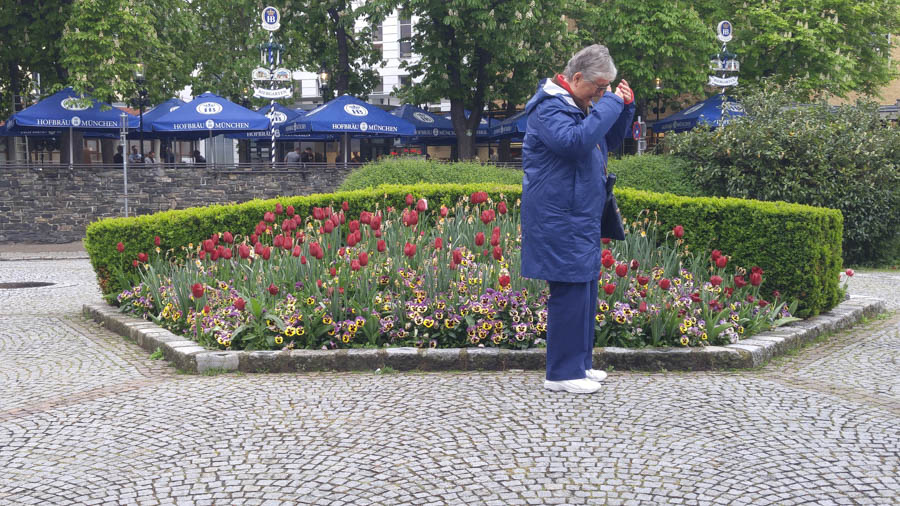
Flowers abound

The local courthouse

Time to shop

Very nice shops in the markeyplace

Well decorated

The local wine bar is open for business

The local pub... Looks closed up?

The local church is open for business

We stopped in for a few minutes

Back at the Steiner Tor Gate and time to board the ship
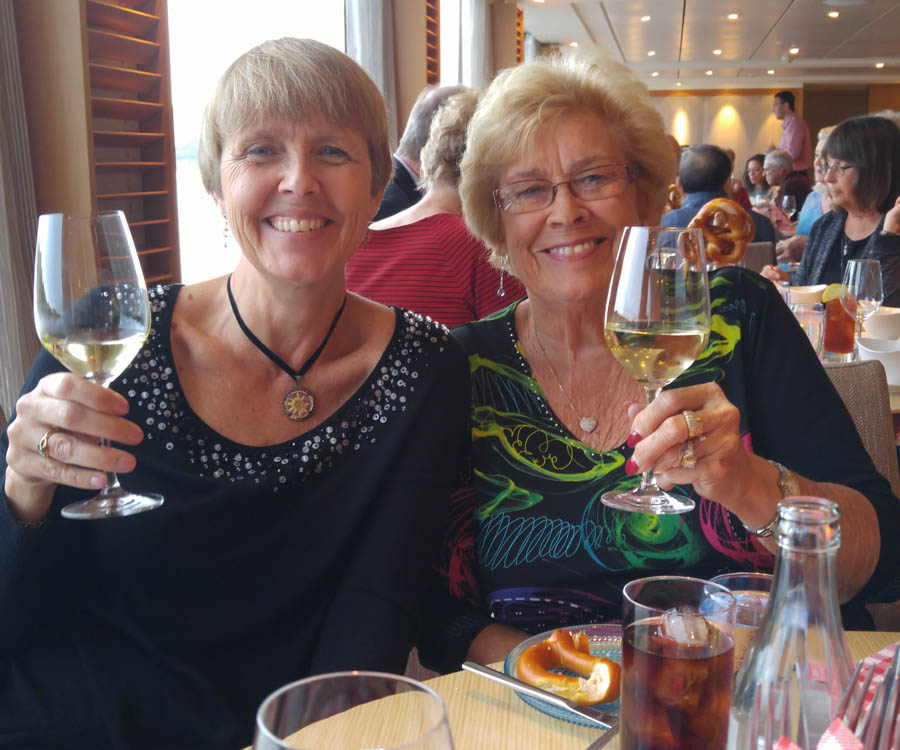
Lots of sightseeing... Time for wine!

New friends

What else for the afternoon snack? Beer and a pretzel

